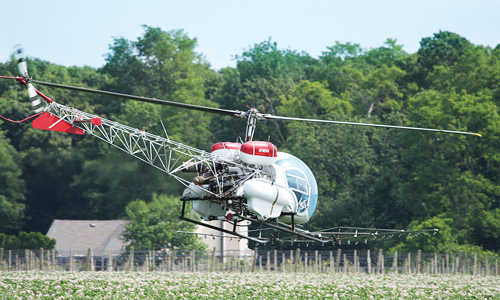Weed-killing chemical yanked from sale on Long Island

Manufacturers of atrazine, one of the most widely used herbicides in the U.S., are pulling the product off Long Island.
Starting next spring, products containing atrazine – an herbicide commonly used to control broadleaf and grassy weeds – will bear a label indicating they are prohibited for use on Long Island, according to the state Department of Environmental Conservation. The restriction, however, was not put in place by the state DEC – pesticide manufacturers, including Syngenta, voluntarily decided to restrict the product’s sale.
The pesticide is commonly used by Long Island corn and potato growers, as well as municipalities and the Metropolitan Transportation Authority to control weeds at right of ways, said Joe Gergela, executive director of the Long Island Farm Bureau.
The manufacturers’ decision follows years of debate concerning atrazine’s presence in Long Island’s groundwater. It is the third-most prevalent pesticide detected in the groundwater, after metalaxyl and imidacloprid.
Between 2007 and 2010, atrazine was detected 124 times in 51 different locations on Long Island, according to the state DEC. Fifty-two of those findings involved 15 different locations on the North Fork.
The majority of those detected concentrations fell well below drinking water and groundwater standards, the DEC states in a data report.
A statement from Syngenta explained that the decision to pull atrazine followed the manufacturer’s involvement with the state DEC’s development of the Long Island Pesticide Use Management Plan, still in its draft stage.
“Older pesticide products that have been detected in groundwater at levels well within EPA guidelines, like atrazine, have been part of the discussion,” Syngenta representatives said in a statement to the newspaper.
Local farmers said alternatives for atrazine are available.
“I hate to lose another tool that we have for weed control, but there’s quite a bit of other alternatives that we can use. It’s not like some of the other pesticides,” said Phil Schmitt, a corn grower in Riverhead.
“We will live without it,” said Mr. Gergela. “We don’t like to lose it because we won’t get it back and it is harder to get the newer and better products here in Suffolk.”
Mr. Gergela said he believes it was a business decision made by the manufacturers.
“It costs millions of dollars to do the testing required to get a pesticide or herbicide registered for use here,” Mr. Gergela said. “We are such a small part of the market it is not worth it for them to go through the hoops.”
Syngenta’s Long Island customers represent less than half a percent of all its U.S. customers, representatives said.
Farm bureau members say their biggest concern is making sure the effective alternatives are available to growers.
“Almost all of the new pesticide products being produced are safe and more effective, so we are trying to get them [to be sold in the area],” said Jeff Williams, manager of governmental relations with the New York Farm Bureau. “It’s a frustration that while these products are coming off the market we are still working to get the newer products on.”








